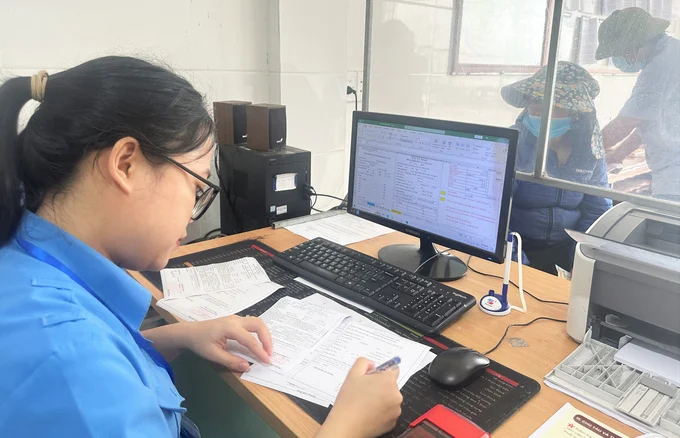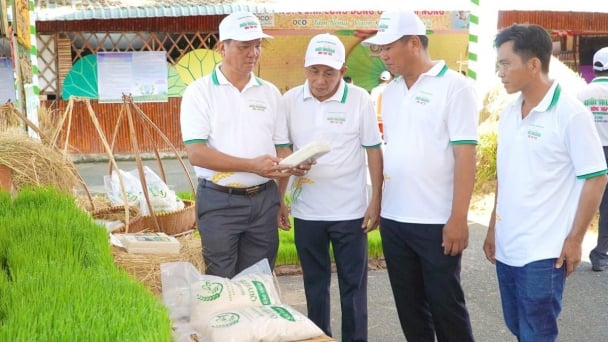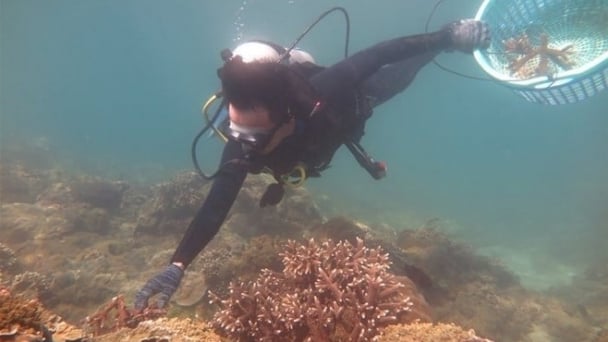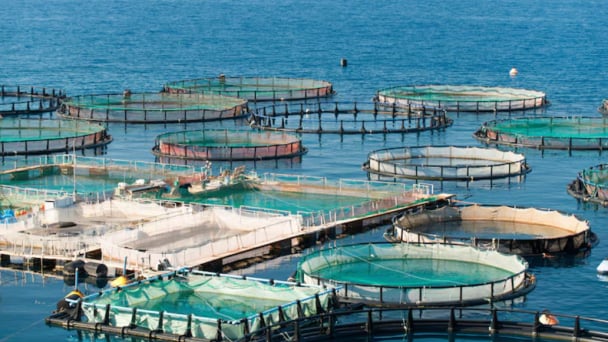June 9, 2025 | 01:38 GMT +7
June 9, 2025 | 01:38 GMT +7
Hotline: 0913.378.918
June 9, 2025 | 01:38 GMT +7
Hotline: 0913.378.918

Most of Ha Tinh's fishing boats are small, under 15m, operating in coastal areas, resulting in a very low output of monitored and supervised aquatic products. Photo: Thanh Nga.
Ha Tinh province currently has 2,514 fishing vessels, of which 83 vessels are 15m or longer, operating in offshore areas; 292 vessels range from 12m to under 15m, also operating offshore; and more than 2,100 vessels range from 6m to under 12m, operating in coastal areas (accounting for over 70%).
Statistics from the professional sector show that the average annual seafood output for the entire province exceeds 35,000 tons, with offshore fishing vessels contributing about 23% (over 7,500 tons).
In early 2024, during an inspection trip to combat illegal, unreported, and unregulated (IUU) fishing, the Ministry of Agriculture and Rural Development's working group assessed that Ha Tinh's monitored and supervised fishing output was very low. Specifically, the monitoring of fishing output at fishing ports only reached about 8-9% of the total fishing output of the province. Meanwhile, monitoring, controlling, and tracing the origin at fishing ports is one of the critical components to lifting the "yellow card" imposed by the European Commission (EC).
At Thach Kim fishing port in Loc Ha district, by the end of June 2024, this port had welcomed more than 2,700 intra-provincial vessels, including 118 vessels over 15m. The Management Board of Fishing Ports and Storm Shelters for Fishing Vessels in Ha Tinh has monitored 100% of the output of 470 tons of intra-provincial aquatic products unloaded from these vessels through the logbook reports of each fishing trip and the vessel monitoring device (VMS). However, this is a very modest number compared to the total aquatic product output of the entire province in the first six months of the year (nearly 22,000 tons).
According to Mr. Than Quoc Te, Deputy Director of the Management Board of Fishing Ports and Storm Shelters for Fishing Vessels in Ha Tinh, the province currently has two operating fishing ports: Xuan Hoi fishing port in Nghi Xuan district and Thach Kim fishing port in Loc Ha district.
According to the provisions of the Fisheries Law, fishing vessels entering ports will be subject to output monitoring. However, in recent times, besides vessels over 15m that are required to enter designated fishing ports, intra-provincial vessels under 15m rarely enter ports. Instead, they mainly use spontaneous ports, traditional ports, and beaches in coastal districts such as Cam Xuyen, Ky Anh, Loc Ha, Thach Ha, Nghi Xuan, and Ky Anh town to trade and unload seafood, making it difficult to monitor output.

Monitoring of fishing output at fishing ports has only reached about 8-9% of the total output of the whole province. Photo: Thanh Nga.
Ky Anh district has 221 fishing boats in operation, with an annual catch of over 3,000 tons. However, the locality is “powerless” and has no solution to monitor the catch from the fleet of boats under 15m in length.
The main causes are small boats fishing inshore, and trading activities of fishermen and small traders organized at small, spontaneous fishing ports. Furthermore, the fishing infrastructure is not guaranteed, resources are limited, and there is a lack of specialized forces, making output monitoring difficult.
The review and assessment process of the Department of Agriculture and Rural Development of Ha Tinh identified that the main reason for the low monitored and supervised output of aquatic products in the province is that most of the fishing port and storm shelter works (Cua Hoi, Cua Sot, Cua Nhuong, Cua Khau) are outdated and degraded after many years of use. The waterways are seriously silted, making it difficult for large-capacity boats to dock, and the requirements for combating IUU fishing in controlling fishing vessels entering and leaving the port are not met.
In addition, the recording and submission of fishing logs by some fishermen are incorrect and insufficient, resulting in discrepancies between the actual unloaded seafood output and the declared output in the log.
“Not only is there a problem with monitoring fishing output at ports, but monitoring small local fleets is also facing many difficulties. To overcome this limitation, it requires the active participation of district and commune authorities, especially the self-declaration awareness of fishermen,” emphasized the leader of the Department of Agriculture and Rural Development of Ha Tinh.
Along with the participation of the Fisheries sector and local authorities, Ha Tinh province is currently directing investors of fisheries infrastructure projects to accelerate construction progress. This aims to improve the port capacity for fishing vessels, facilitating the loading, unloading, and transportation of aquatic products.

The main reason for the low monitoring of fishing output is due to small boats fishing inshore and trading activities of fishermen and small traders organized at small, spontaneous fishing ports. Furthermore, fishing infrastructure is not guaranteed. Photo: Thanh Nga.
The first project is Cua Nhuong fishing port in Cam Xuyen district. Once completed, this project will meet the scale of a level II fishing port, accommodating ships with a capacity of 400CV, and handling 100 docking ships per day, with an annual throughput of about 16,000 tons of aquatic products. Currently, the Management Board of Investment and Construction Projects for Agriculture and Rural Development of Ha Tinh province is urging contractors to work overtime, increase shifts, and take advantage of low tide to quickly progress to the component assembly stage. The project has completed about 50% of the volume, aiming to be handed over and put into use by the end of this year.
Recently, the Thach Kim Fishing Port Expansion Investment Project in Loc Ha District has started construction with many important items, aiming to meet the criteria of a type II port. The Cua Khau Fishing Boat Storm Shelter Project in Ky Ha Commune (Ky Anh Town) Phase 2, with a total investment of 120 billion VND, is also being accelerated by contractors.

To address the shortcomings, Ha Tinh province is urging the acceleration of construction progress on fishing infrastructure projects to improve port capacity for fishing vessels, facilitating the loading, unloading, and transportation of aquatic products. Photo: Thanh Nga.
"When completed, these projects will contribute to improving the capacity of the fishing port system in Ha Tinh, ensuring the number of ships entering and leaving the port, as well as entering storm shelters, and increasing the rate of aquatic product output monitored through the port," emphasized the leader of the Ha Tinh Fisheries Department.
After the assessment by the Ministry of Agriculture and Rural Development, the People's Committee of Ha Tinh province assigned districts and towns with spontaneous fishing ports and wharves to manage and regularly update the unloaded output of small boats and ships when they dock.
At the same time, it is essential to regularly monitor and ensure that 100% of fishing vessels with a length of 15m or more must dock at designated ports, record and submit fishing logs according to regulations, and check and compare information in fishing logs to ensure consistency with fishing vessel monitoring data.
Fisherman Nguyen Van H. from Thach Hai commune, Thach Ha district, has two small boats under 8m long for fishing fish and squid near the shore. If he were to declare his daily catch at the fishing port according to regulations, his boat would have to travel nearly ten nautical miles to Cua Nhuong port in Cam Xuyen district or Cua Sot port in Loc Ha district. This is both costly and time-consuming for fishermen, so he has not declared his daily catch to the authorities for a long time.
Translated by Quynh Chi

(VAN) Dong Thap has launched a meeting in response to the Action Month for the Environment under the theme 'Live Green - Join Hands for a Green Economy' at Tram Chim National Park.

(VAN) The ocean has the capacity to absorb millions of tons of carbon, provided that mangrove forests, coral reefs, and biodiversity are protected.

(VAN) Technology is redrawing the map of Vietnamese aquaculture: more modern, greener, and more sustainable.

(VAN) Novel process harnesses machine learning to reveal groups of genes that determine how efficiently plants use nitrogen.

(VAN) Several scientists and farmers are experimenting with soil treatment in some key durian-growing regions such as Cai Lay (Tien Giang), Dak Song, Gia Nghia, and Dak R’lap (Dak Nong).
/2025/05/25/4127-3-073637_820.jpg)
(VAN) Thanks to the promotion from an FAO-implemented project, vegetable production in greenhouses in Moc Chau has seen strong development, from 1.5 hectares in 2021 to nearly 50 hectares in 2024.

(VAN) FAO has recently supported USD 140,000 to implement the project 'Risk mitigation human-animal interface risks through disease control initiatives in pig farming.'